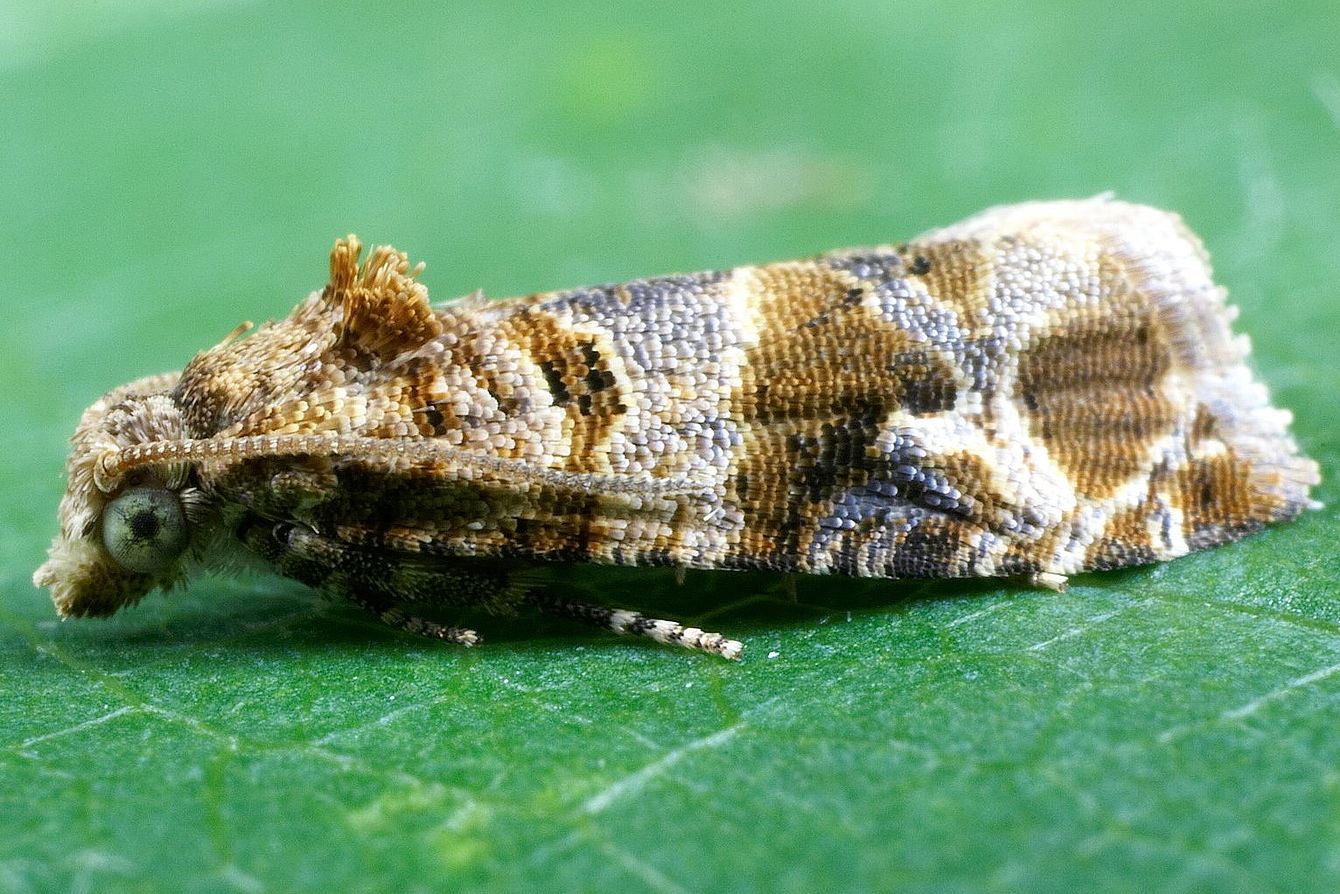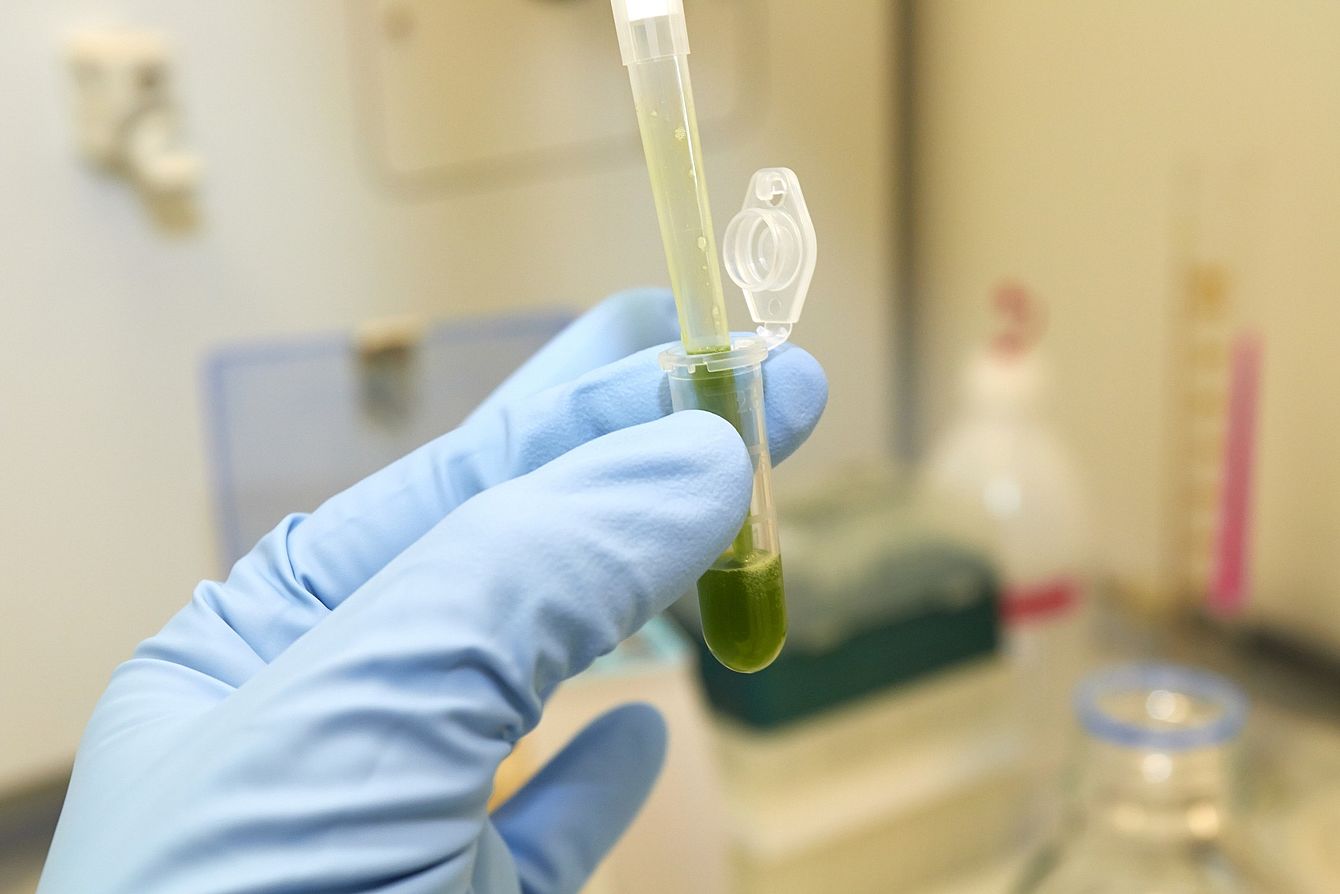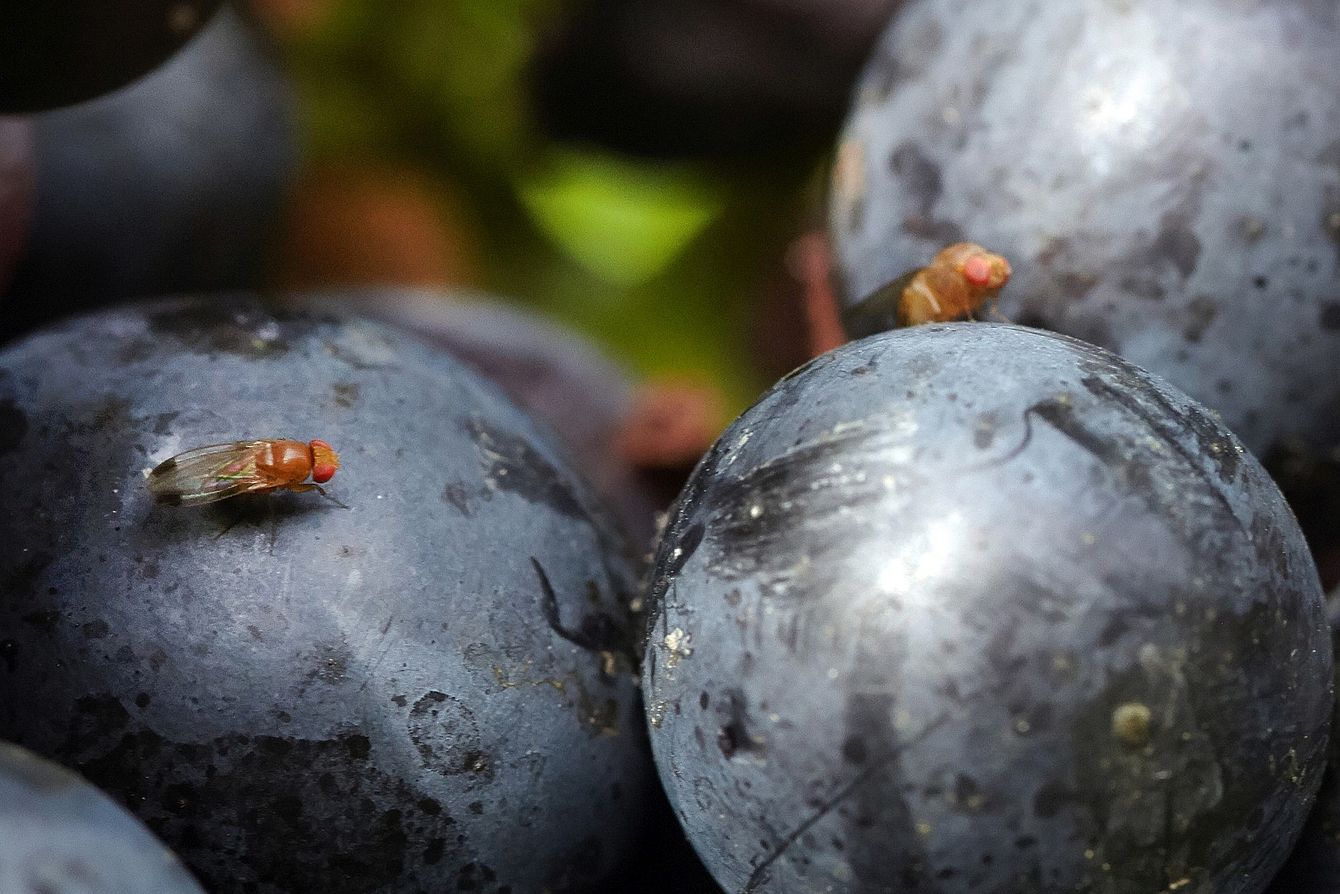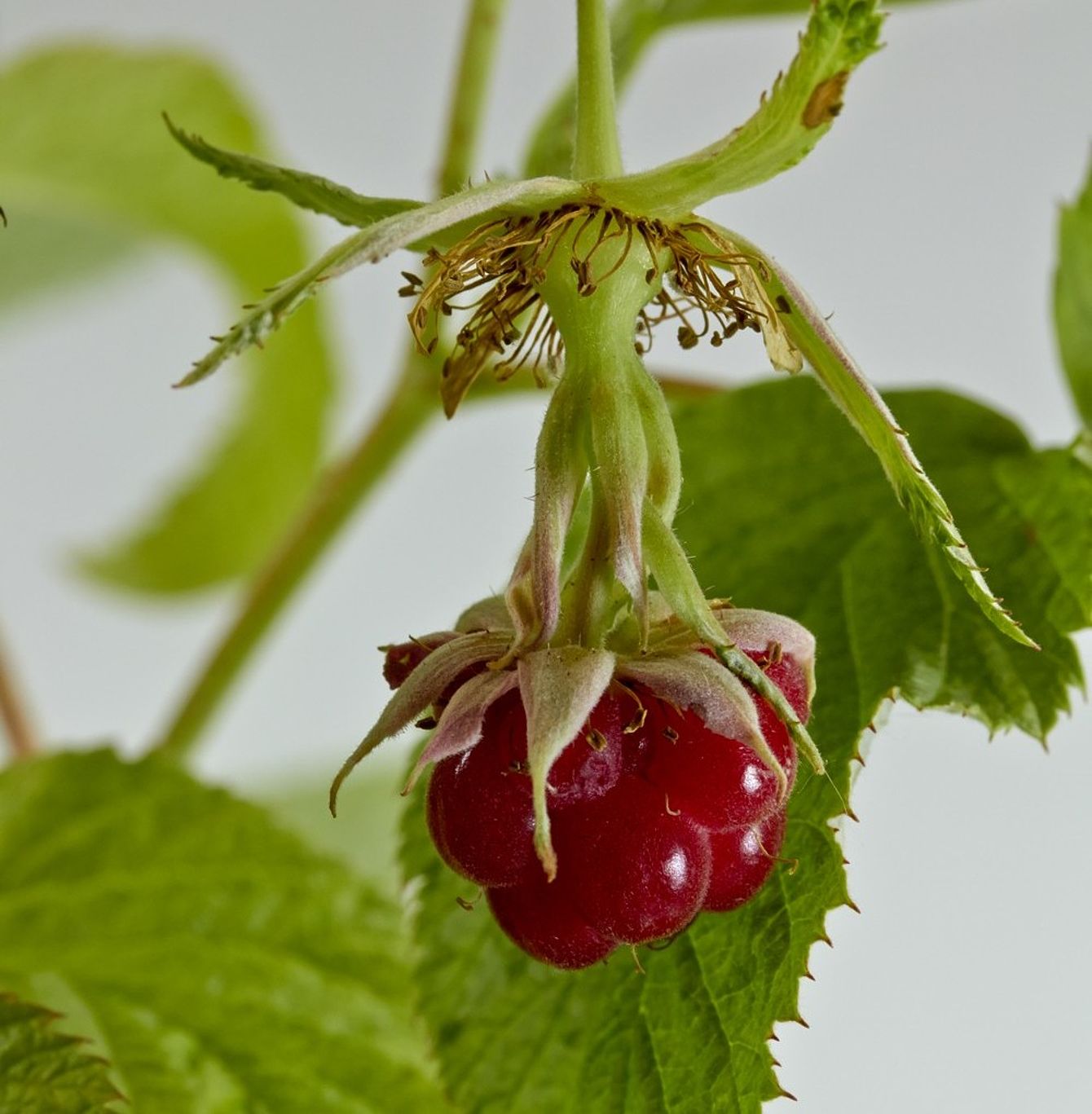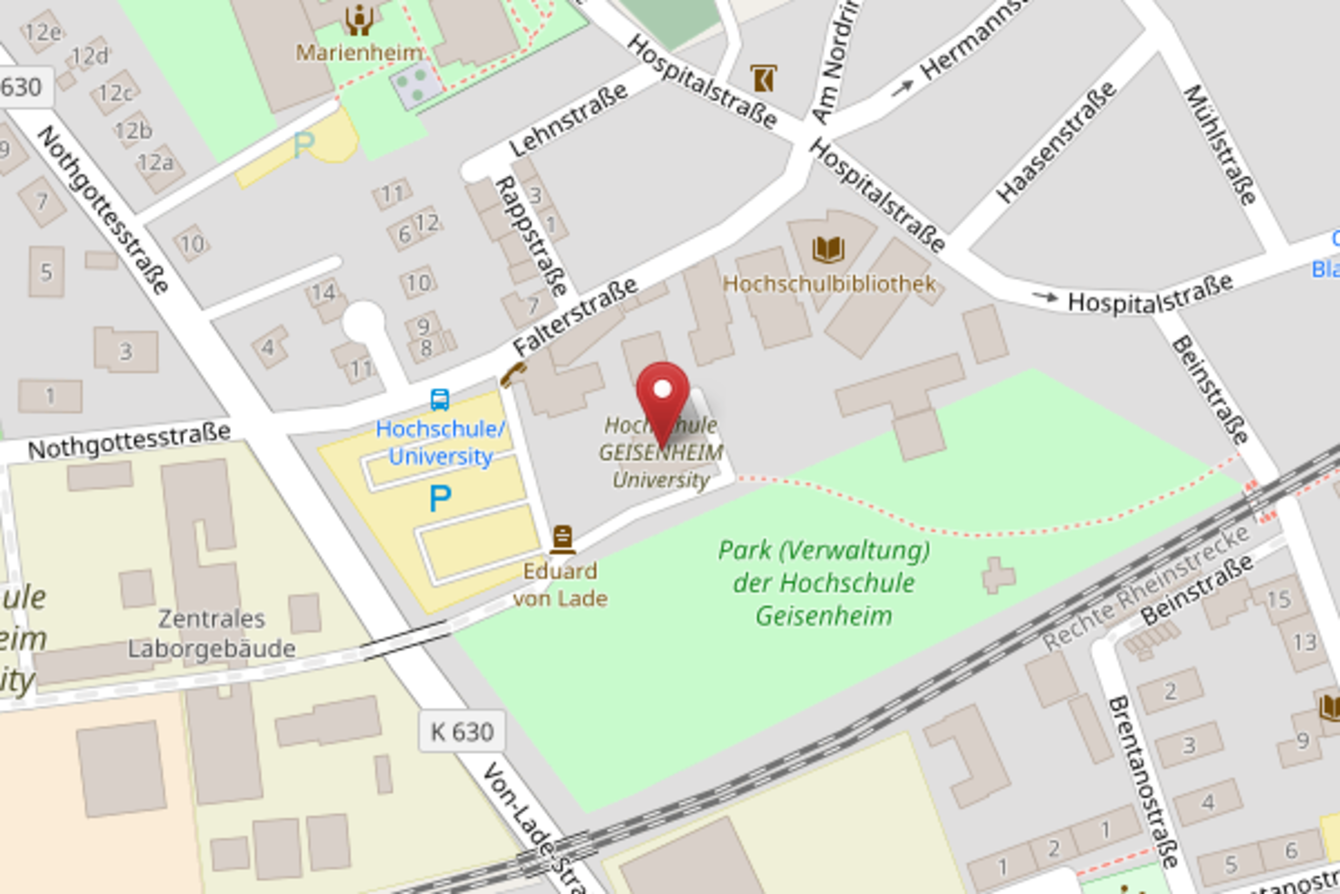Professorship Research Projects
Project start: 01.01.2024
Project end: 31.12.2027
Sponsor: Hessen State Ministry of Higher Education, Research and the Arts
Adapting to climate change with increasing drought is currently one of the greatest challenges for agriculture. With the integration of deep-rooted plants or perennial taproot plants into crop rotations, mixed crops can use resources more efficiently, and greater drought stress tolerance can therefore be expected. At the same time, plant health, climate protection through carbon storage in the soil, and biodiversity should increase. The project “TRIO: Transformative Mixed Crop Systems for One Health", a joint project between Geisenheim University and the Universities of Kassel and Giessen funded within the LOEWE priority program, is testing these hypotheses by cultivation of the medicinal and aromatic plants fennel, caraway, and coriander in intercropping with wheat. At the department of Crop Protection, Geisenheim University the sub-project “Diversity, food webs, and migratory movements of arthropods in mixed cropping systems” is studied. Arthropods provide important ecosystem services that are relevant for plant health and yield. According to the hypothesis of biotic resistance, biological diversity in a cultivation system can reduce the damage caused by pests and increase productivity at the same time. This is investigated in this subproject via a comparative analysis of arthropod diversity and their ecosystem services in intercropping systems compared to the corresponding monocultures. In addition, migratory movements of beneficial arthropods between cropping partners as well as the volatile plant compounds of the partner plants are evaluated with regard to their attractiveness for selected beneficial insects and pests in choice experiments.
Project start: 01.04.2023
Project end: 31.03.2026
Sponsor: Federal Ministry of Education and Research
Project start: 01.01.2018
Project end: 31.12.2025
Project start: 15.04.2021
Project end: 31.03.2025
Sponsor: Federal Office for Agriculture and Food
The invasive spotted wing drosophila, Drosophila suzukii, has become a main pest in stone fruit and protected berry fruit production. So far, no effective methods for biocontrol of this pest exist. On the basis of native pupal parasitoids, an innovative strategy for sustainable and biological regulation as an alternative to chemical control options will be developed. This requires the following work packages: (1) An efficient and quality-assuring mass rearing process for production of the pupal parasitoids in sufficient quantities needs to be developed. (2) The best developmental stage of the beneficial insects for release will be characterized. A formulation for their application and quality-maintaining release carriers will be developed. (3) Necessary application schedules will be elaborated. The application will be optimized by means of a model on the basis of biological data and under consideration of abiotic factors such as cultivation practices and weather conditions. (4) The effectiveness of the releases will first be tested in practical trials and, after optimization, on farms. For this purpose, it is also necessary to test the integration of the releases into the overall crop management procedures, in particular with regard to a combination with common plant protection products. Overall, the project will provide a new biocontrol management strategy based on the use of specific antagonists for regulation of spotted wing drosophila in protected berry cultivation.
Project start: 01.11.2021
Project end: 31.10.2024
Sponsor: European Commission, Federal Ministry of Food and Agriculture
The main objective of the ResBerry project is to provide the necessary knowledge and demonstrate the effectiveness of tools to enhance above- and belowground biodiversity in European organic berry orchards in order to increase resilience of berries against major pests and diseases. Accordingly, ResBerry will apply the most recent advances in: a) Implementation of preventive pest control measures through management of habitats for natural enemies in organic berry orchards by including companion plants in the form of flower strips, trap plants and/or cover crops supported with an optimized crop canopy structure; b) Deciphering the soil microbial community in organic berry orchards, how communities are shaped by companion plants, and which measurements can be applied to favour beneficial soil microorganisms as a preventive measurement against soil-borne pathogens and for overall increased resilience; c) Raising awareness among farmers for using direct innovative pest control strategies, such as entomopathogenic nematodes for control of spotted wing drosophila and entomovectoring for control of grey mould; d) Evaluating the implications of the proposed measures on yield and nutritional quality of berries and tackling the consumers’ expectations regarding these measures; e) Disseminating and communicating the results to stakeholders, growers, market organizations, research scientists, academia, technical services and consumers. With a wide geographical coverage in five European countries, the project will focus on strawberries and raspberries but will also consider other small fruits as well.
Project start: 01.01.2023
Project end: 30.06.2024
In various areas branches of horticulture and also in the food industry, efficient cleaning and disinfection of shoe and boot soles, both in the entrance area and between different departments, is considered an important hygiene measure. Hygiene sluices are available for this purpose, among others, which consist of a combination of hand disinfection and shoe sole cleaning. So far, there are very few well-founded study results on the effectiveness of such devices. Therefore, the project will determine whether a commercially available hygiene sluice has sufficient cleaning and disinfection performance and which parameters are responsible for this.
In this context, a standardised test procedure for the validation of hygiene sluices will first be developed. Since previously used inoculation methods did not correspond to the usual soiling in horticultural work areas, a standard soiling is being developed that takes these conditions into account and with which specific practical conditions can be simulated by simple variation. This standard soiling will first be tested for its suitability for the contamination of shoe soles. Furthermore, tests will be carried out to optimise the hygiene sluice.
The results will be used to develop recommendations as a standard method for manufacturers and users of hygiene sluices, which can contribute significantly to minimising the risk of transmission of relevant microorganisms in the production and processing of vegetables.
Project start: 17.06.2019
Project end: 31.05.2024
Sponsor: Federal Ministry of Food and Agriculture
The control of downy mildew, caused by Plasmopara viticola, is one of the major challenges in viticulture,
especially in organic viticulture. Due to the ban of copper-containing pesticides and massive impacts of
climate change, organic viticulture is increasingly entering an economic crisis. Therefore, the aim of the
proposed joint project "VITIFIT" is to develop a catalogue of measures with practicable strategies for
maintaining grapevine health. In this way, cultivation conditions are improved, the production security is
consolidated and thus economic viability is guaranteed. Crop protection strategies will mainly be based on
copper minimisation (microencapsulated copper salts) and copper substitutes (plant extracts, UVC
technology) and their combination. Associated cultivation and cultural measures should reduce the
inoculum potential of P. viticola. Molecular biological analyses will address the mycobiome of the vine leaf
under these conditions. Particular attention should be paid to the plant protection agent potassium
phosphonate. Existing and newly bred fungus tolerant grape varieties (in German: PIWIs) should play a
central role in the developed action plans. Aims here are the improvement of the enological wine style, the
market acceptance of PIWIs and their introduction into practice. The identification of new resistance loci
against P. viticola and their integration into current breeding lines will support the development of novel
PIWIs. Another focus of the project is the adaptation of the forecast model "VitiMeteo Rebenperonospora"
to PIWIs. In the sector of knowledge and technology transfer, communication, the flow of information and
networking between research and practice are to be optimised. The VITIFIT project should make a
significant contribution to achieving the "20% goal" (national sustainability goal concerning the percentage
of organic agriculture area).
Project start: 01.03.2020
Project end: 28.02.2023
Sponsor: , Geisenheim University
Future viticulture needs to minimise the impacts of agrochemicals on human health and on environment by favouring biological control. Entomopathogenic fungi could be used in an integrated pest and disease control program as they are selective, will not cause emergance of resistance in pest populations and persist in the medium after their application. However, abiotic factors such as temperature, humidity and sunlight affect the efficacy and persistence of entomopathogenic fungi. A deeper understanding of the ecology of these fungi is thus necessary to ensure optimal conditions of their potential use for biological control.
The GRAPHYTI project aims to explore the endophytic potential of the entomopathogenic fungi Metarhizum roberstii on grapevine. We will test if M. robertsii strains could be associated to grapevine roots without harming plant growth while having a pathogenic effect on arthropod pests (more particularly the root-feeding phylloxera and grapevine-moths). This project will build upon a native entompathogenic fungi collection performed from four wine-growing environments (fungi naturally occurring in vineyard soils) with contrasting climatic conditions (temperature and humidity): Germany, southern France, southern Australia and western Argentina. A collection of M. robertsii strains will be molecularly identified and characterised under different temperatures, humidity conditions, CO2 concentrations and for their pathogenic effect on pests. We hope to be able to provide native entomopathogenic fungi strains that could be used to protect grapevine against pests in a sustainable way: being adapted to local climatic conditions and to future global warming.
Project start: 01.11.2018
Project end: 31.10.2021
Sponsor: Federal Ministry of Food and Agriculture
The project mikroPraep represents a joint network of two research institutes, a biotechnological company and an associated university partner. The overall goal is the development of a marketable plant protection agent based on a strain of the bacterium Lysobacter enzymogenes. Ideally, the product provides broad action against several fungal and bacterial diseases on diverse crop plants.
In a first step, antifungal and antibacterial activity will be investigated in the lab as well as in greenhouse trials. Here, efficacy of living bacterial cells and cell- free fermenter cultures will be tested individually. In that way it can be determined to which extent fungicidal and antibacterial effects are based on whole living cells or on bacterial metabolites. Additionally a detailed characterisation of the bacterial metabolites will be carried out, an important step regarding high product efficacy and safety. In subsequent steps different formulations will be produced and tested regarding aspects such as storage stability, applicability and biological activity. These parts of the project will be mainly investigated in field trials on different crops.
Project start: 15.08.2018
Project end: 14.10.2021
Sponsor: Federal Ministry of Food and Agriculture
Will mating disruption be an effective method to control the European grapevine moth (Lobesia botrana) in the future or will it be hindered by elevated atmospheric carbon dioxide (CO2) concentrations? L. botrana, the major pest insect in vineyards, is currently well-controlled in Germany, resulting in a massive decrease of applied insecticides. Yet, it is unclear if this success will persist in a changing climate.
Male European grapevine moths find females in the vineyard by following the trace of sex pheromones they emit. In order to prevent successful location of females, artificial pheromones are dispensed all over the vineyard, concealing the real traces (mating disruption method) and hence reducing the number of mating events. Elevated CO2 concentrations can affect insect physiology. We therefore study if (1) the composition of female sex pheromones and/or (2) the perception of these pheromones by males as well as their behavior changes under future CO2 concentrations.
“KlimaKom” is a joint research project of the Applied Chemical Ecology lab at the Julius Kühn Institute and the Department of Crop Protection at the HGU, funded by the German Federal Ministry of Food and Agriculture. Using the vineyard Free Air Carbon dioxide Enrichment (FACE) facility in Geisenheim as well as the wind tunnels and gas chromatography-electroantennography equipment in Dossenheim, we are combining field and laboratory experiments. Additionally, we are studying the impact of elevated atmospheric ozone concentrations.
Project start: 01.03.2018
Project end: 28.02.2021
Sponsor: Hessen State Ministry of Higher Education, Research and the Arts
The aim of this project is to assess the effects of abiotic stressors (in particular increased atmospheric CO2 concentration) on the interactions between grapevines and the two grape berry moth species (Lobesia botrana and Eupoecilia ambiguella). For this purpose, experiments will be carried under controlled conditions in greenhouse chambers as well as in the Geisenheim VineyardFACE facility. Parameters of development of both moth species under different CO2 concentrations are recorded, as well as changes in the expression pattern of relevant genes during the larval development on grapevines in the field under elevated and ambient CO2 concentration. For this purpose, investigations of the larval transcriptome will be carried out by RNAseq.
Project start: 10.07.2017
Project end: 31.03.2019
Sponsor: Development agency for agribusiness
Phytoplasmas (Candidatus Phytoplasma) are cell wall-less plant-pathogenic bacteria which can colonize the phloem of more than 700 plant species including many economically important crops. They cause a wide range of symptoms that vary depending on the phytoplasma strain, their host plant, and environmental factors, and usually include yellowing of leaves, proliferation of shoots and stunting. In grapevine (Vitis vinifera) phytoplasmas cause diseases referred to as grapevine yellows. In other fruit trees like apple (Malus domestica) they cause apple proliferation and in pear (Pyrus) they lead to pear decline. Phytoplasmas are spread by phloem-feeding insect vectors, grafting, or vegetative propagation of infected plants. Control strategies for phytoplasmas currently rely only on preventing their spread, as there are no effective chemical plant protection products against phytoplasmas. In addition, phytoplasma diseases have long incubation periods of up to several months before symptoms can be observed. Therefore, this project aims to develop a fast and reliable molecular detection method for phytoplasmas based on LAMP and TaqMan assays, respectively, to be used in the production of vegetatively propagated crops like grapevine, apple, or pear.
Project start: 01.04.2016
Project end: 31.03.2019
Sponsor: European Commission, Hessisches Ministerium für Landwirtschaft und Umwelt, Weinbau, Forsten, Jagd und Heimat
Yellow Wilting has been a problem in cultivation of corn salad for many years. Many abiotic and biotic factors have been excluded as causes. Yet, respective organisms and control measures are not identified. The project within the framework of EIP Agri aims at identifying the cause of Yellow Wilting with the help of metagenomic and metabolomic analyses and developing effective control strategies. Initial results show that solarization as soil disinfestation is efficient in inhibiting Yellow Wilting.
Project start: 01.01.2015
Project end: 31.10.2018
Sponsor: Federal Ministry of Education and Research, European Commission
A key role for a resource-saving, sustainable land use management of agricultural ecosystems are the interactions between biodiversity and associated ecosystem services. The PromESSinG project aims to identify management options for promoting biodiversity in order to reduce external inputs in vineyards ecosystems. It will be conducted from 2015 to 2018 in five countries of Central Europe : Germany, France, Austria, Switzerland, and Romania. The project intends to unravel biodiversity driven processes associated with the main ecosystem services in viticultural systems taking different management factors into account. A particular focus will be on the analysis of interactions between soil management strategies and soil biodiversity, as interactions between the diverse soil biota as well as chemical and physical properties of the soil environment are fundamental for the provision of soil-based ecosystem services.
The intended research will be conducted in temperate vineyard systems in France, Switzerland, Germany, Austria and Romania, thus covering a gradient from maritime to continental climates. In a common study with all countries involved and using a standardized sampling design we will analyze the links between disturbance gradients and diversity of soil relevant species groups (soil microflora including mycorrhiza, macrofauna, plants), soil function and related supporting, regulating and provisioning ESS. Management effects on these interactions are analyzed on two different scales by combining: a) the factor soil management (local scale) including three vineyard ground management treatments of different disturbance intensities, b) the factor landscape management (landscape scale) consisting of three different landscape heterogeneity levels.
Project start: 01.03.2015
Project end: 28.02.2018
Sponsor: Hessen State Ministry of Higher Education, Research and the Arts
The spotted wing drosophila, Drosophila suzukii Matsumura is an invasive and highly polyphagous insect, being able to infest a variety of important crops, including cherries, raspberries, strawberries and grapes. In contrast to native European Drosophila species female flies lay their eggs in undamaged fruits, where larvae develop on fruit flesh, causing fruits to rot within a few days, thus making them unmarketable. Accordingly, yield losses of up to 100% and thus severe economic losses have been recorded. Accordingly, the development of new management strategies is required which allow a sustainable control of this insect during the cultivation of grapevine and soft fruit.
The major aim of this project is therefore the development of an efficient and selective trap and/or attractant. This attractant, in conjunction with e.g. biological insecticides, can be utilized in bait traps or oviposition medium which previously has been treated with an insecticide to combat the spotted wing drosophila before the ripening of soft fruits or grapes.
Project start: 01.06.2015
Project end: 31.12.2017
Sponsor: Hessisches Ministerium für Landwirtschaft und Umwelt, Weinbau, Forsten, Jagd und Heimat
Project start: 01.01.2014
Project end: 31.12.2016
Sponsor: Hessen State Ministry of Higher Education, Research and the Arts
As little is known about the effect of eCO2 on grapevine-pest interactions, we studied the effects of eCO2 on interactions between grapevine and two of its economically most significant pests – downy mildew (Plasmopara viticola) and European grapevine moth (Lobesia botrana). Experiments conducted investigate parameters of the biology of P. viticola (e.g. duration of incubation period, vitality of zoospores, germination of soilborne oospores) as well as the developmental biology of L. botrana (e.g. hatching rate, duration of development stages, pupal weight, longevity and survival rate, fertility of females). Microscopic studies of pest-relevant morphological characteristics of grapevines (e.g. thickness of berry skin, stomatal density and stomatal aperture) are supposed to provide explanations for possible changes in pest infestation levels under eCO2. Furthermore, expression levels of relevant defense genes in grapevines were investigated to record possible changes in defense reactions of the host plant towards the respective pest organism. The data obtained will contribute to a better understanding of mechanisms in plant-pest interactions under altered environmental conditions.
Project start: 01.03.2013
Project end: 31.12.2016
Sponsor: Federal Ministry of Food and Agriculture
Rubus stunt is considered the most important phytoplasmosis on raspberries and can cause yield losses of up to 100%. With the diagnostic methods available so far, latently infected but also symptomatic plants are not detected properly. In addition, potential vectors and possible transmission routes are unknown. The aim of the project is to develop a highly sensitive and rapid molecular on-site test system for the early diagnosis of this phytoplasmosis. In addition, findings on the species spectrum of potential vectors and further transmission routes are to be obtained, which will serve as a basis for the development of targeted and timely control measures.
The development of a molecular method for the diagnosis of Rubus stunt will follow the establishment of an on-site sampling protocol based on TaqMan probes, LAMP assays and label-free detection. Investigations on the species spectrum and phenology of potential vectors, further transmission routes, the susceptibility of raspberry cultivars as well as on targeted control measures are to be carried out in a raspberry propagation farm or in yielding plants. Based on this, management strategies for the propagation and cultivation of raspberries will be developed. Finally, the methods developed for molecular phytoplasma diagnostics are to be validated under field conditions and transferred to other crops for the detection of phytoplasmas.
Project start: 01.01.2013
Project end: 31.12.2016
Sponsor: European Commission
InnoVine is a European collaborative project funded through the Knowledge Based Bio-Economy (KBBE) program, launched in January 2013. During 4 years, it will involve 27 different partners from 7 European countries (Bulgaria, France, Germany, Hungary, Italy, Portugal and Spain).
Project start: 01.03.2012
Project end: 31.12.2015
Sponsor: German Federal Environmental Foundation
Fungal entomopathogens are important antagonists of arthropod pests and have attracted increased attention as biocontrol agents in pest management programs. Some entomopathogenic fungi can endophytically colonize an array of plant species, providing systemic protection against damage by various insect pests or triggering induced systemic resistance mechanisms against plant pathogens.
In the present study, greenhouse experiments were conducted to verify endophytic establishment of Beauveria bassiana in grapevine plants Vitis vinifera. Therefore, two commercialized B. bassiana strains (ATCC 74040 and GHA) were applied on potted grapevine plants. The antagonistic activity of endophytic B. bassiana against putative target pest insects like the vine mealybug Planococcus ficus was assessed using surface sterilized leaves for a bioassay. Possible effects of endophytic B. bassiana on the feeding preference of black vine weevil Otiorhynchus sulcatus choosing between control and inoculated plants were examined through choice assays. Furthermore, the protective potential against grapevine downy mildew Plasmopara viticola was investigated in greenhouse experiments.
Endophytic survival of B. bassiana inside leaf tissues was evident at least 28 days after inoculation. A significant effect of endophytic B. bassiana on growth and on mortality of P. ficus one week after the initial settlement of the vine mealybugs was evident. Adult O. sulcatus chose significantly more often control plants as a host plant compared to grapevine plants with endophytic B. bassiana. A significant effect on the disease severity of downy mildew on potted grapevine leaves could be observed if plants were treated with B. bassiana 3 and 7 days before an inoculation with P. viticola.
Endophytic establishment of B. bassiana in grapevine plants therefore represents an alternative and sustainable plant protection strategy, with the potential of reducing pesticide applications in viticulture.
Project start: 01.01.2011
Project end: 31.12.2015
Sponsor: Landesbetrieb Landwirtschaft Hessen
"Yellow Wilting" is a severe problem in the production of corn salad (Valerianella locusta). The symptoms are yellow, chlorotic and limp leaves. Affected plants are not marketable any more.
Previous experiments have pointed to the fact that plant pathogens might be involved. The microbiocoenosis in soils with symptomatic and asymptomatic plants shall be investigated, using experiments in green house and climate chambers.
According to Directive 1107/2009 of the EU our department is officially recognized as a facility for efficacy testing of plant protection products. We are thus holding a GEP (good experimental practice) Recognition Certificate, authorized from the German Plant Protection Service. Over the years, we have gained huge experience in conducting field trials in particular in viticulture, testing various aspects of integrated and biological control of grapevine pests and diseases.
In field and greenhouse trials, we are testing plant protection products and/or agents for their efficacy, selectivity and (un)desired side effects, focusing on the best application date and interval, screening for the optimal concentration of active ingredients, taking fungicide resistance aspects into consideration and optimizing newly developed biological control agents (e.g. application coat, uptake by fungal cells, rain stability).
